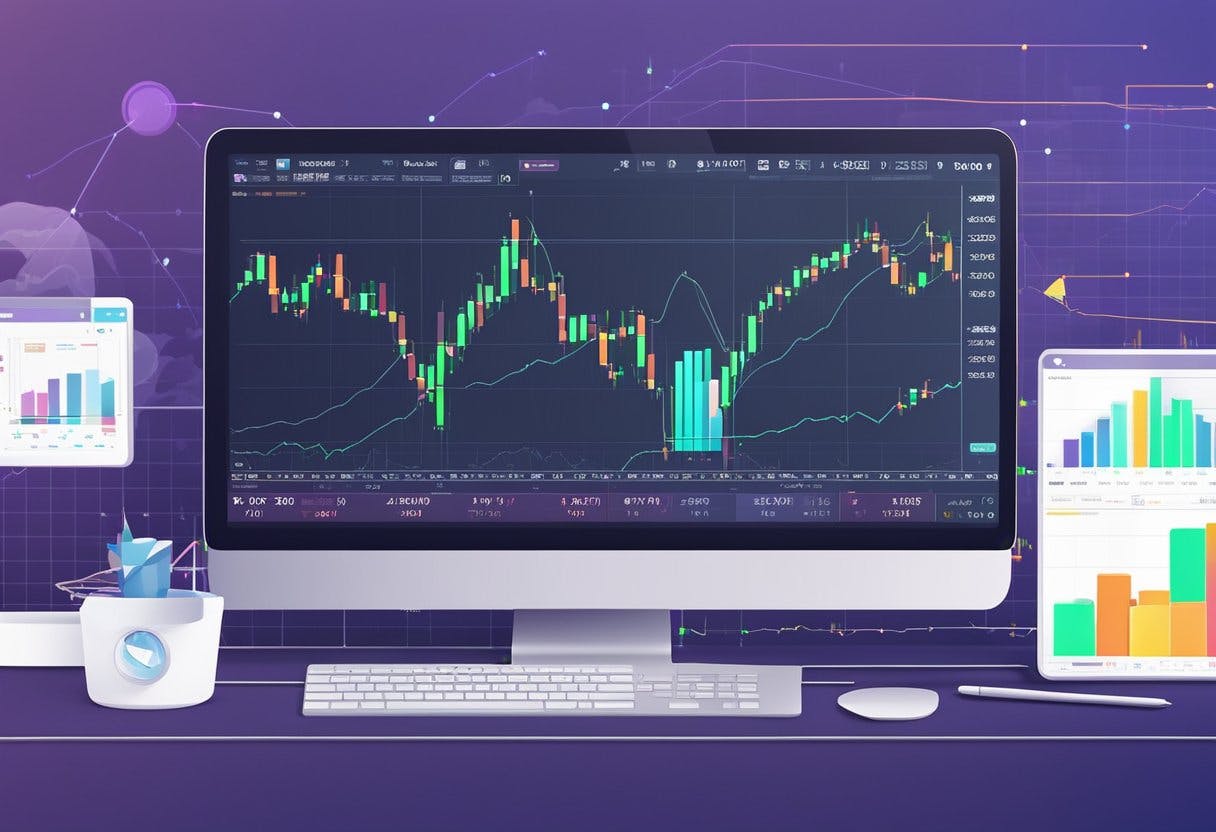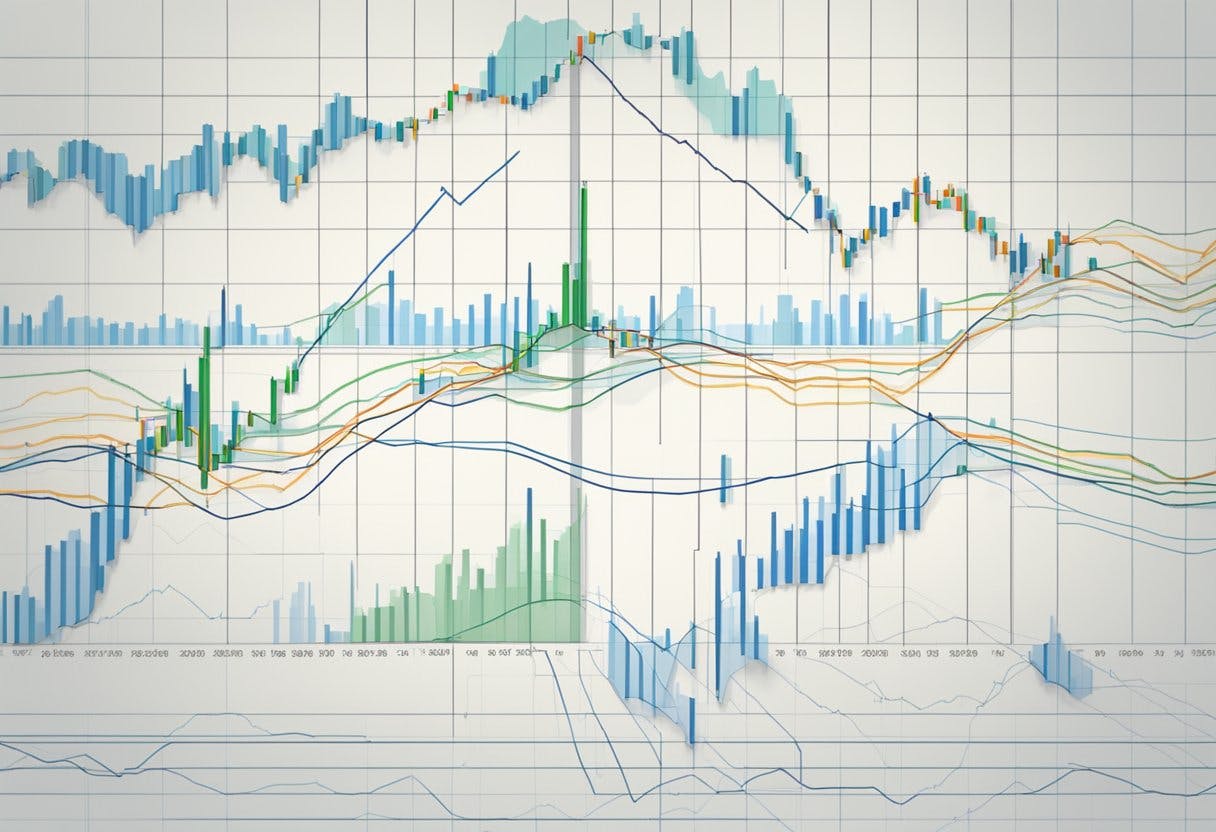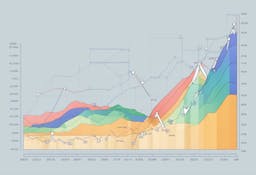
Forex line trading is a popular method used by traders to analyze and predict price movements in the forex market. Trend lines are used to identify patterns that can help traders make informed decisions about when to buy or sell currency pairs. Forex line trading is a technical analysis tool that can be used by traders of all levels to improve their trading strategies.

To understand forex line trading, it is important to have a basic understanding of the forex market. Forex trading involves buying and selling currency pairs with the goal of making a profit. Currency pairs are traded in real-time, and their values are influenced by a variety of factors, including economic indicators, political events, and market sentiment.
Analyzing market trends is an essential aspect of forex line trading. Traders use technical analysis tools to identify patterns in price movements and to predict future price movements. Developing a trading strategy is crucial for success in forex line trading. Traders must have a clear understanding of their risk tolerance and must be able to identify profitable trading opportunities.
Key Takeaways
- Forex line trading is a technical analysis tool used by traders to analyze and predict price movements in the forex market.
- Analyzing market trends is an essential aspect of forex line trading.
- Developing a clear trading strategy is crucial for success in forex line trading.
Fundamentals of Forex Line Trading

Forex line trading is a technical analysis technique used to predict price movements in the forex market. It involves drawing straight lines on price charts to connect significant swing highs and lows. These lines are called trendlines and are used to identify areas of support and resistance that can provide valuable insights into market behavior.
Understanding Support and Resistance
Support and resistance are two key concepts in forex line trading. Support is a price level where demand is strong enough to prevent the price from falling further. Resistance is a price level where supply is strong enough to prevent the price from rising further.
Support and resistance levels are formed when the price reaches a certain level multiple times and fails to break through. These levels can be identified by drawing horizontal lines on the price chart at the relevant levels.
The Significance of Trendlines
Trendlines are used to connect the swing highs and lows of a currency pair and can help traders identify the direction and momentum of a trend. An uptrend is identified by drawing a trendline connecting the swing lows, while a downtrend is identified by drawing a trendline connecting the swing highs.
Trendlines can also be used to identify areas of support and resistance. When a trendline is broken, it can indicate a shift in market sentiment and the possibility of a trend reversal.
Overall, understanding the fundamentals of forex line trading is crucial to becoming a successful trader. By identifying areas of support and resistance and using trendlines to identify trends, traders can make more informed trading decisions and increase their chances of success.
Analyzing Market Trends

When it comes to Forex line trading, analyzing market trends is crucial. By identifying and recognizing trends, traders can make informed decisions about when to enter and exit trades. There are three main types of trends: uptrends, downtrends, and sideways trends.
Identifying Uptrends and Downtrends
An uptrend is characterized by a series of higher highs and higher lows. This means that each successive peak and trough is higher than the previous one. In contrast, a downtrend is characterized by a series of lower highs and lower lows, with each peak and trough being lower than the previous one.
To identify an uptrend, traders can draw a trend line connecting the series of higher lows. Conversely, to identify a downtrend, traders can draw a trend line connecting the series of lower highs. By doing so, traders can visually see the direction of the trend and use this information to make trading decisions.
Recognizing Sideways Trends
A sideways trend, also known as a range-bound market, occurs when the price is moving within a relatively narrow range. In this type of market, there is no clear direction, and the price is moving horizontally. Traders can identify a sideways trend by drawing horizontal lines to connect the series of highs and lows.
It is important to note that trends can change over time, and traders must be vigilant to recognize when a trend is ending. For example, an uptrend may start to reverse into a downtrend when the price starts making lower highs and lower lows. Similarly, a downtrend may start to reverse into an uptrend when the price starts making higher highs and higher lows.
In conclusion, analyzing market trends is a critical aspect of Forex line trading. By identifying and recognizing trends, traders can make informed decisions about when to enter and exit trades. By using trend lines and horizontal lines, traders can visually see the direction of the trend and use this information to make trading decisions with confidence.
Developing a Trading Strategy

Developing a trading strategy is one of the most important steps in Forex line trading. A trading strategy is a set of rules and guidelines that a trader follows to make informed trading decisions. A good trading strategy should include entry and exit points, risk management techniques, and other important factors.
Entry and Exit Points
Entry and exit points are critical components of a trading strategy. Entry points are the points at which a trader enters a trade, while exit points are the points at which a trader exits a trade. There are many different ways to determine entry and exit points, including using technical indicators, trend lines, or other methods. It is important to choose entry and exit points that are based on sound analysis and informed trading decisions.
Risk Management Techniques
Risk management is another important aspect of developing a trading strategy. Risk management techniques are designed to help traders minimize their losses and maximize their profits. One common risk management technique is the use of stop-loss orders. A stop-loss order is an order to sell a security when it reaches a certain price. This can help traders limit their losses if the trade goes against them.
Another important risk management technique is the use of take-profit orders. A take-profit order is an order to sell a security when it reaches a certain price. This can help traders lock in profits if the trade goes in their favor.
In conclusion, developing a trading strategy is an important step in Forex line trading. A good trading strategy should include entry and exit points, risk management techniques, and other important factors. By making informed trading decisions and using sound analysis, traders can increase their chances of success in the Forex market.
Technical Indicators and Tools
Technical indicators and tools are essential in Forex line trading. They help traders to identify market trends and predict future price movements. Some of the most popular technical indicators and tools used in Forex line trading include moving averages, momentum, MACD, RSI, and Fibonacci retracement.
Moving Averages and Momentum
Moving averages are used to identify the direction of the trend and to smooth out price fluctuations. They are calculated by taking the average price of a currency pair over a specified period. Traders use moving averages to identify key levels of support and resistance, as well as to determine potential entry and exit points.
Momentum is another important technical indicator used in Forex line trading. It measures the rate of change of a currency pair’s price over a specified period. Traders use momentum to identify the strength of a trend and to determine potential entry and exit points.
MACD and RSI
The Moving Average Convergence Divergence (MACD) is a popular technical indicator used in Forex line trading. It is used to identify changes in the momentum, direction, and strength of a trend. Traders use MACD to identify potential entry and exit points, as well as to confirm the strength of a trend.
The Relative Strength Index (RSI) is another important technical indicator used in Forex line trading. It measures the strength of a currency pair’s price movement over a specified period. Traders use RSI to identify potential entry and exit points, as well as to determine the strength of a trend.
In conclusion, technical indicators and tools are essential in Forex line trading. Traders use them to identify market trends and predict future price movements. Moving averages, momentum, MACD, RSI, and Fibonacci retracement are some of the most popular technical indicators and tools used in Forex line trading.
Trading Execution and Platforms
Forex line trading requires a reliable and quality trading execution platform to minimize trade latency and slippage. Choosing a trading platform is a crucial step for any trader. The platform should be user-friendly, secure, and have advanced charting and technical analysis tools. Trading platforms should also have access to real-time market data and news.
Choosing a Trading Platform
There are many trading platforms available for online trading, but not all of them are suitable for forex line trading. A good trading platform should offer a variety of order types, including limit orders, stop orders, and market orders. It should also have a customizable interface, allowing traders to tailor the platform to their trading style and preferences.
One popular trading platform for forex line trading is MetaTrader 4 (MT4). MT4 is a powerful platform that offers advanced charting and technical analysis tools. It also has a large community of traders who share custom indicators and trading strategies.
Another popular trading platform is FOREX.com’s trading platform. It offers a user-friendly interface, customizable charting tools, and access to real-time market data and news. FOREX.com’s trading platform also has advanced order management tools, allowing traders to manage their trades more effectively.
Live Trading and Market Sentiment
Live trading is a crucial part of forex line trading. Traders must be able to execute trades quickly and efficiently to take advantage of profitable opportunities. A reliable trading platform is essential for live trading.
Market sentiment is also an important factor in forex line trading. Traders must be able to gauge market sentiment and adjust their trading strategies accordingly. Trading platforms that offer access to real-time market data and news can help traders stay informed about market sentiment.
In conclusion, choosing the right trading platform is essential for successful forex line trading. Traders should look for a platform that offers advanced charting and technical analysis tools, access to real-time market data and news, and a customizable interface. A reliable trading platform can help traders execute trades quickly and efficiently, and stay informed about market sentiment.
Frequently Asked Questions
How do I perform trend analysis in Forex trading?
Trend analysis is a crucial aspect of Forex trading. It involves identifying the direction of the market and making trades accordingly. To perform trend analysis, traders often use technical analysis tools such as trend lines, moving averages, and other indicators. These tools help to identify trends in the market, which can then be used to inform trading decisions.
What triggers a margin call in Forex trading and how can I avoid it?
A margin call occurs when a trader’s account balance falls below the required margin level. This can happen when a trade goes against the trader and they lose money. To avoid a margin call, traders should always ensure that they have enough margin in their account to cover their trades. They should also use stop-loss orders to limit their losses in case a trade goes against them.
What strategies can I use to trade with trendlines effectively?
There are several strategies that traders can use to trade with trend lines effectively. One popular strategy is to buy when the price of a currency pair bounces off a trend line that is acting as support. Conversely, traders can sell when the price of a currency pair bounces off a trend line that is acting as resistance. Another strategy is to use multiple trend lines to identify areas of support and resistance.
What are the recognizable patterns in Forex trend trading?
There are several recognizable patterns in Forex trend trading. These include head and shoulders, double tops and bottoms, triangles, and flags. These patterns can be used to identify potential trading opportunities and to inform trading decisions.
How can I accurately draw trend lines to inform my trading decisions?
To accurately draw trend lines, traders should look for two or more points on a chart where the price of a currency pair has reversed direction. These points should be connected with a straight line, which will act as a support or resistance level. Traders should also ensure that the trend line is not too steep or too shallow, as this can affect its accuracy.
Is it possible to start trading Forex with a small initial investment like $100?
Yes, it is possible to start trading Forex with a small initial investment like $100. However, traders should be aware that trading with a small account can be challenging, as it limits the number of trades that can be made and the amount of risk that can be taken. Traders should also ensure that they have a solid trading strategy in place and that they are aware of the risks involved in Forex trading.
Read More




